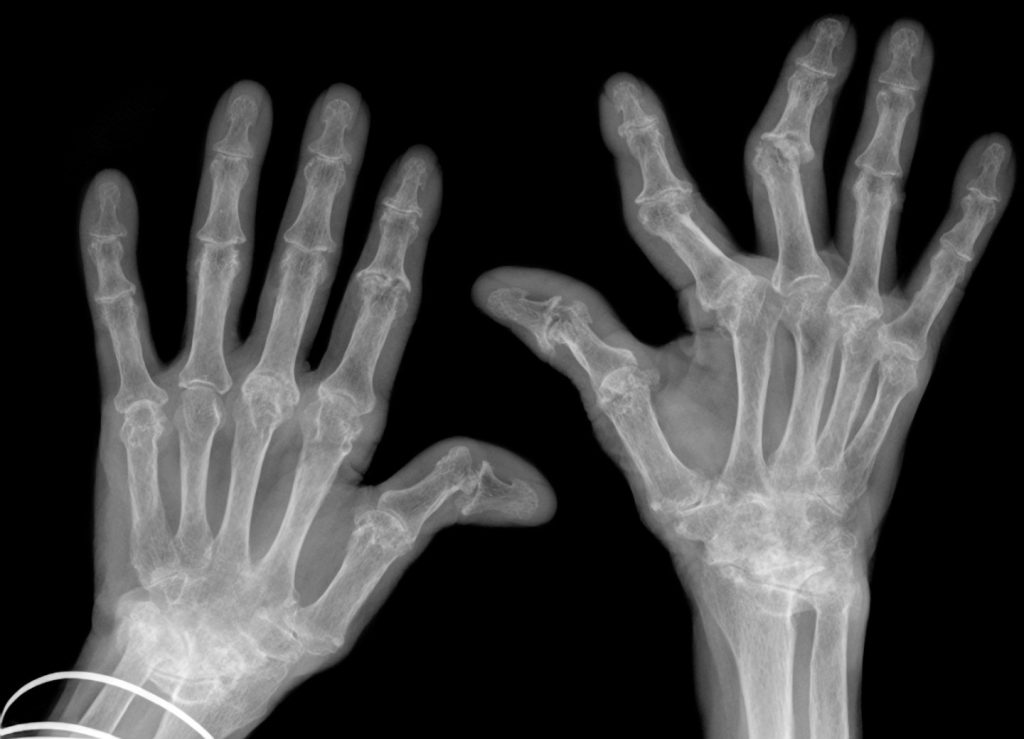Researchers at five Fraunhofer research institutes have combined 3D printing with AI to develop a unique way of producing patient-specific finger joint implants.
As part of the ‘FingerKIt’ project, the team have come up with an automated implant design process, in which AI is deployed to turn 2D X-ray images into 3D finger models. This novel workflow is said to not only enable the correction of any finger positioning issues, but facilitate the creation of smooth, frictionless implants, with reduced post-processing needs that can be binder jetted with precision.
“As the structure of the implant shaft is very delicate, we have chosen to use the metal binder jetting 3D printing method for titanium,” explains Dr. Philipp Imgrund, head of the AM Process Qualification department at Fraunhofer IAPT. “This method allows for an extremely precise production of the small, complex implants and also enables us to structure the surface of the shaft in such a way that it grows into the bone more effectively.”

AI-driven implant 3D printing R&D
According to the Fraunhofer team, finger injuries or illnesses like rheumatoid arthritis can “put serious limitations on someone’s life and cause them physical and mental strain.” This is especially the case for people whose jobs involve intricate hand movements like musicians or surgeons, who could face an end to their careers.
At present, many treatments see patients’ joints fused, something that can place severe restrictions on their day-to-day life. Where implants are used, they either tend to be basic and not allow for a full range of movements, or be made from silicone, meaning they can quickly come loose and need to be reattached in another procedure.
To tackle this, the Fraunhofer Research Institution for Additive Manufacturing Technologies IAPT, the Fraunhofer Institute for Ceramic Technologies and Systems IKTS, the Fraunhofer Institute for Toxicology and Experimental Medicine ITEM, the Fraunhofer Institute for Mechanics of Materials IWM and the Fraunhofer Institute for Digital Medicine MEVIS have sought to develop a new patient-specific implant.

In order to come up with a perfectly-fitting solution that doesn’t slip out of place and restores patients’ joints to their previous level of mobility, the five institutes have developed a novel automated process chain. At the center of this workflow is a Fraunhofer MEVIS-honed AI, which is capable of deriving an individual implant design from a 3D finger model and automatically sending it for 3D printing.
Once binder jet 3D printed (or slip casted when made from ceramic) at Fraunhofer IKTS, these implants are sintered, leaving them with a near-net shape and minimal finishing requirements. While Fraunhofer ITEM is taking care of questions over the biocompatibility and certification of resulting implants, they could soon be used to treat badly bent fingers, missing bone parts or very small hand joints.
Manufacturing on Demand
The researchers’ calculations show that it may be possible to reduce the time it takes to get from implant production to fitting by up to 60%, and enable the process to be completed in days. Compared to feet or ankle implants, the team also believe the market for the remobilization of joints is still “significantly underdeveloped,” and they cite ‘expert predictions’ that it could hit €5.8 million by 2026.
Given this untapped potential and recent developments in their study, the scientists are now seeking to work with a commercial partner to bring their implant-printing workflow to market, and they’re seeking device certification to ease the process.
3D printing in finger joint repair
Implantable 3D printed joints could have a significant untapped market potential, but the Fraunhofer researchers are not the only ones seeking to take advantage of this. Late last year, BICO and Nanochon unveiled plans to develop 3D printed regenerative joint implantsthat could deliver faster recoveries for patients while reducing costs to healthcare providers.
In the past, REJOINT has also come up with a means of using AI to 3D print personalized implants. When the project was unveiled two years ago, the firm pledged to use GE Additive Arcam’s Electron Beam Melting technology and computerized analysis of intraoperative and postoperative data collected via wearables, to develop knee replacements.
Elsewhere, for those with severe hand injuries, scientists at the University of Bristol have developed a 3D printed artificial fingertip with the potential to allow amputees to ‘feel’ objects via prosthetics. With further R&D, the team behind the tip say that it could revolutionize the world of robotics, or help improve the grip of those with prosthetic hands.
You might also like:
Cancer patient treated with 3D bioprinted nose grown on her forearm in breakthrough surgery: Clinicians at the Claudius Regaud Institute and Toulouse University Hospital have given a patient a nose transplant with an implant grown on their own forearm.
* This article is reprinted from 3D Printing Industry. If you are involved in infringement, please contact us to delete it.
Author: Paul Hanaphy

Leave A Comment